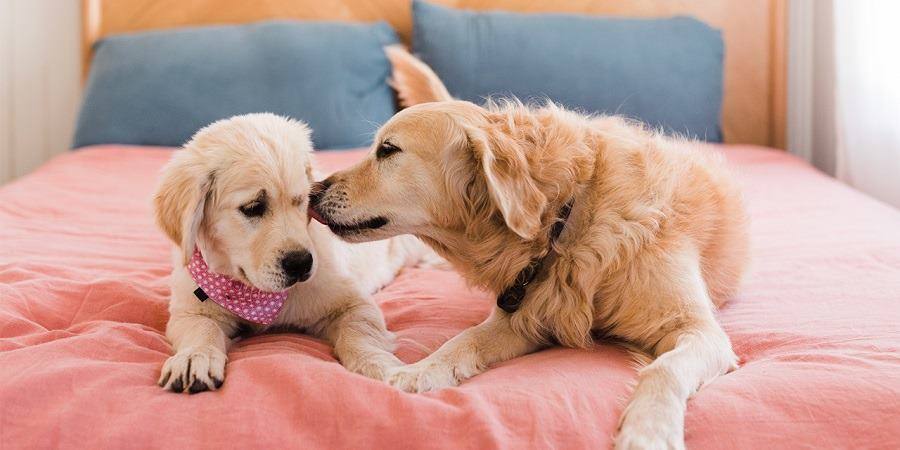When a family that already has a dog decides to get a puppy, there will be a list of things they must arrange such as vaccinations, house training, dog daycare enrolment, etc. However, the one task that needs more thought than any other is introducing that puppy to its big brother or sister aka the existing family dog.
In the vast majority of cases, an older dog will accept a new puppy into the home, but this process must be done correctly. For example, simply turning up one day with a little puppy and expecting your existing family dog to welcome it with open paws, is usually asking too much of that dog, even if they have been well trained.
Remember, dogs are not people and their instincts and personality follow well-established traits. One of those is a dog’s sense of its territory and sense of protection towards its family. Although a little puppy carries no threat, it does not mean that your existing dog’s instincts are not triggered, and it sees it as such.
This can lead to aggression towards the puppy in the worst case, but more commonly it can also mean the dog rejects the puppy, starts behaving erratically, or it may show signs of emotional distress such as becoming withdrawn.
Thankfully, all of those unwanted scenarios can be avoided by following recommended actions for introducing a puppy to an older dog. Read on for seven tips which include actions and advice for the successful introduction of your newest four-legged family member to your existing dog.
Stay Calm Throughout: Our first tip is that you and your family remain calm throughout the entire introduction process. Any signs of you getting excited, anxious, or angry could trigger your older dog into thinking something is wrong which is not helpful.
Give Your Older Dog Something With The Puppy’s Scent On It: Before the puppy and dog meet, give your older dog something which has the puppy’s scent on it such as a toy or a blanket. This allows the older dog to get used to the puppy’s scent before meeting it.
Make The First Meeting In Neutral Territory: Further to our point about dogs being territorial, rather than meeting in the home the best practice is for the first meeting between the older dog and puppy to be in a neutral place. This could be the park, the beach, or even in the street.
Keep Both Dogs On The Leash: A simple one but given that puppies can be excitable it is best that until the older dog seems to have accepted the puppy, you keep both of them on the leash.
Start Showing Your Puppy Boundaries From Day 1: Even if you plan to enrol them in puppy school it is never too early to start teaching your puppy. This begins with teaching them boundaries such as not trying to eat from the older dog’s food bowl, for example.
Try To Keep To Your Older Dog’s Normal Routine As Much As Possible: The less disruption and distress your older dog experiences the more likely they are to feel reassured about the new puppy’s presence. To that end, keep to their normal walking and feeding times.
Stay Super-Vigilant: We say this with as much emphasis on watching what the puppy is doing as your current dog. It is more likely the puppy doing something will upset your older dog than the other way around, so stay alert.

